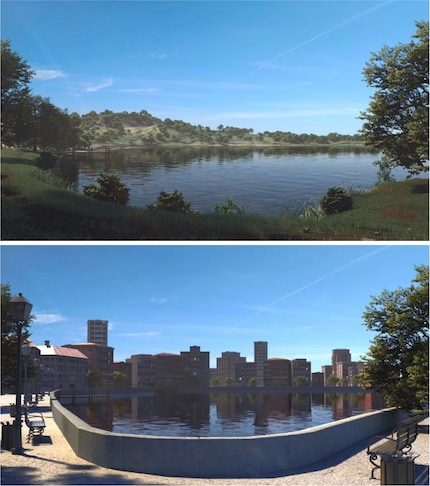
Why nature is becoming a pain killer
Surrounded by nature, we perceive pain less strongly. This has been proven by measurements of brain activity in magnetic resonance imaging. What exactly is the effect based on?
A view of greenery alleviates pain - this has long been suspected in medical research. However, it has remained a mystery as to why this is the case and what is important. A team from the University of Vienna and the University of Exeter investigated the analgesic effect of a natural environment on the brain and came to an astonishing conclusion: Pain appeared dampened at the "lower" processing levels in the brain - and not, for example, where the emotional evaluation of pain takes place or expectations about it are formed. The researchers therefore consider a pure placebo effect to be unlikely. It also had no influence on pain relief whether the test subjects considered themselves to be more or less connected to nature.
The working group recorded the brain activity of 49 participants who underwent a series of harmless but unpleasant electric shocks to their hands while lying in an MRI scanner. Meanwhile, the volunteers were placed in various virtually generated environments via video. The first video showed a calm lake, the second the same lake surrounded by buildings, and in the third film the test subjects found themselves in a fashionably simple office. The images were accompanied by appropriate, restrained background noise.

Source: Pressebild zu Steininger, M.O. et al.: Nature exposure induces analgesic effects by acting on nociception-related neural processing. Nature Communications 16, 2025, fig. 1; mit frdl. Gen. von Louise Vennells, Pressoffice University of Exeter
The test subjects reported that they felt significantly less pain in a natural environment. Previous studies had already suggested such an effect, but the mechanisms were still unknown. It has now been possible to analyse the brain networks associated with pain processing in more detail. For example, a distinction is made between "higher" order networks, which mediate emotional and motivational aspects associated with the perception of pain, and those of a lower order, which process the input from the pain receptors relatively directly.
Reduced activity was found at the lower processing level, for example in the thalamus, in the secondary somatosensory cortex and in the posterior part of the insular cortex. These regions are not only responsible for processing early sensory information about pain, but their activity can also be influenced by attention processes. This observation is supported by the fact that the test subjects stated that the natural scenes tended to distract them from the pain. According to one theory, natural environments contain numerous elements that capture our attention.
"Our study is the first to suggest that this is not simply a placebo effect," says Max Steininger, PhD student at the University of Vienna and lead author of the study. The pain-relieving effect of nature is significantly less than that of painkillers. However, compared to weeks of training in which cognitive coping strategies are learnt, real or virtual nature stimuli could be quickly implemented as a complementary measure.
Spectrum of science
We are partners of Spektrum der Wissenschaft and want to make well-founded information more accessible to you. Follow Spektrum der Wissenschaft if you like the articles
Originalartikel auf Spektrum.deExperts from science and research report on the latest findings in their fields – competent, authentic and comprehensible.